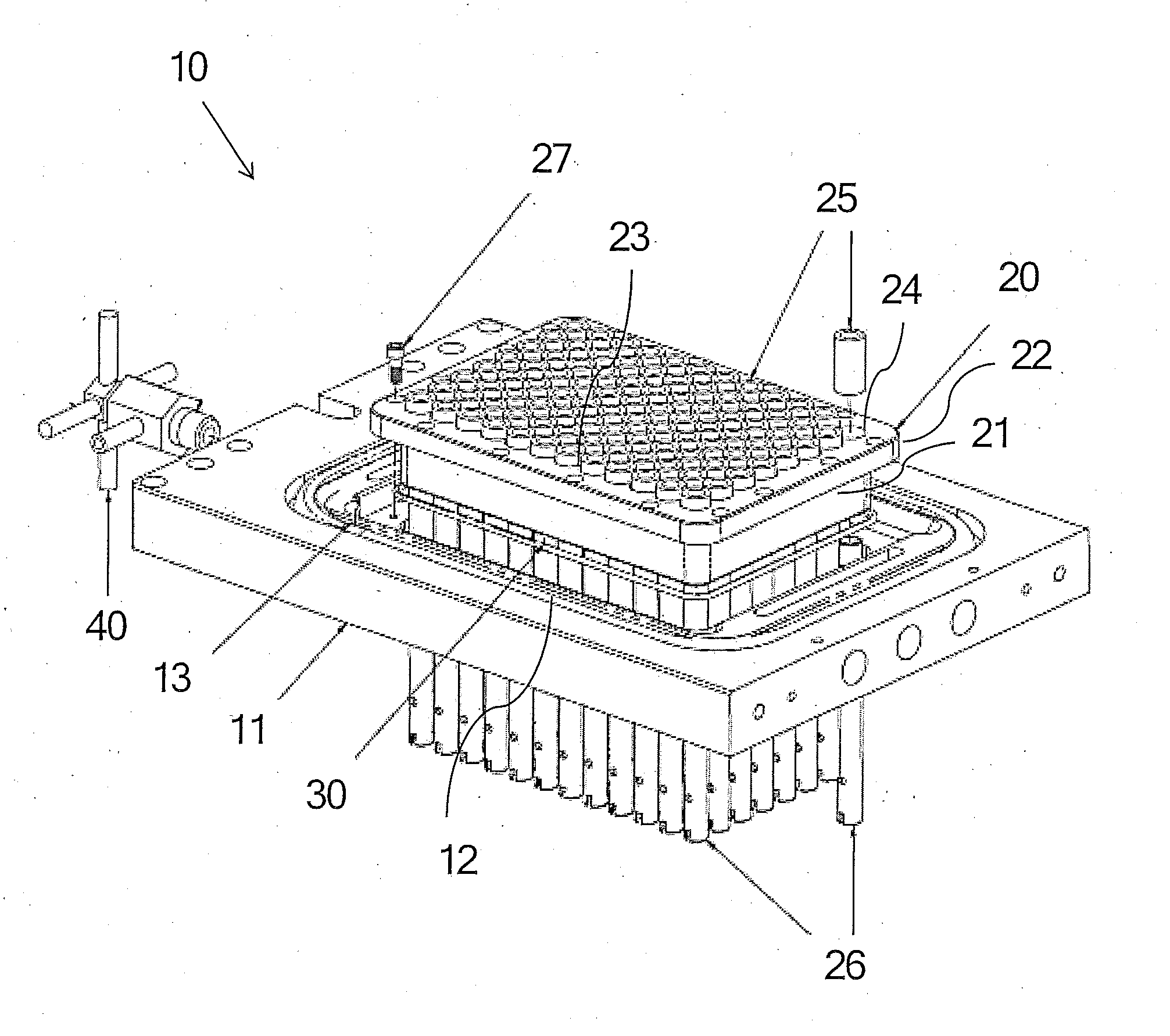Multi-well manifold assembly system for oligonucleotide synthesis
a manifold assembly and oligonucleotide technology, applied in the field of multi-well manifold assembly system for oligonucleotide synthesis, can solve the problems of cross-contamination of nucleic acid samples in multi-well plates, oligonucleotides often require further purification, and create a mixture which gets cross-contaminated into other wells, so as to reduce cross-contamination, reduce cross-contamination, and reduce the pressure of the synthesis well
- Summary
- Abstract
- Description
- Claims
- Application Information
AI Technical Summary
Benefits of technology
Problems solved by technology
Method used
Image
Examples
example 1
[0049]Sample experiments were conducted to demonstrate the reduction of cross-contamination in oligonucleotide synthesis reactions in a multi-well synthesizer using the method and system in accordance with one aspect of the present invention. Specifically the invention was utilized during the deprotection steps of synthesis. Contamination testing of one such experiment is shown in FIGS. 5 and 6, containing Tables 1-5. Specifically, as to FIG. 5, the tables show regular gas phase testing: Table 1 shows contamination testing wherein the samples were carried out via regular gas phase; Table 2 shows contamination testing wherein the samples were carried out via Regular gas phase wherein the membranes dried overnight. As to FIG. 6, the tables show gas phase testing using the system and method of the subject invention: Table 3 shows contamination testing wherein the samples were carried out via the subject inventions flow through gas phase—dried on vessel; Table 4 shows contamination test...
PUM
| Property | Measurement | Unit |
|---|---|---|
| length | aaaaa | aaaaa |
| diameter | aaaaa | aaaaa |
| length | aaaaa | aaaaa |
Abstract
Description
Claims
Application Information
 Login to View More
Login to View More - R&D
- Intellectual Property
- Life Sciences
- Materials
- Tech Scout
- Unparalleled Data Quality
- Higher Quality Content
- 60% Fewer Hallucinations
Browse by: Latest US Patents, China's latest patents, Technical Efficacy Thesaurus, Application Domain, Technology Topic, Popular Technical Reports.
© 2025 PatSnap. All rights reserved.Legal|Privacy policy|Modern Slavery Act Transparency Statement|Sitemap|About US| Contact US: help@patsnap.com



